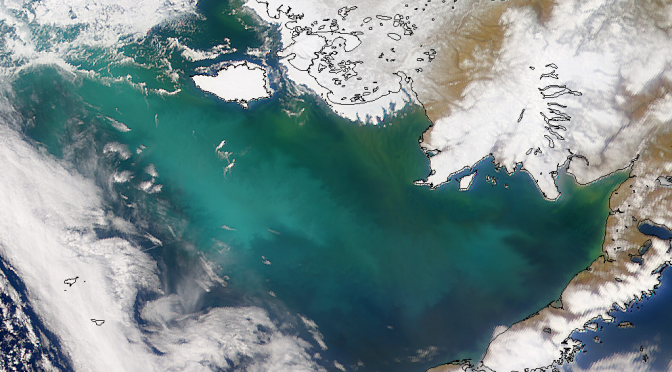INFLUENCE OF THE BERING SEA ON ARCTIC ECOSYSTEMS EXPERIENCING RAPID REDUCTIONS IN SEA-ICE

The presence of a strong halocline in the Arctic Ocean represents a major impediment for vertical transport of nutrients from the deep Arctic Ocean into the upper euphotic zone. As a consequence, primary production rates in these waters are largely dependent on nutrients advected from elsewhere.

Two of the most productive ecosystems of the Arctic Ocean, the Chukchi and Beaufort Seas are largely dependent on nutrients supplied by Pacific waters flowing northwards through the Bering Strait. Our ongoing shipboard, satellite, mooring and modeling studies, have allowed us to observe large intra-seasonal to annual changes in the rate of formation and retreat of sea-ice in the Bering Sea that have a significant impact on phytoplankton standing stocks and the composition of native phytoplankton and zooplankton communities. Here we contend that changes in phytoplankton production and nutrient drawdown rates associated with variations in sea-ice conditions in the Bering Sea could significantly influence the transport of nutrients, particulate and colored dissolved organic materials into the Arctic Ocean through the Bering Strait and consequently, the patterns of productivity and structure of plankton communities of the Chukchi Sea and the western Pacific Arctic Ocean. In recent years, the Bering Sea has been experiencing a cold spell and extensive sea-ice conditions which are in sharp contrast to the warming trend and rapid seasonal losses of sea-ice observed in the Arctic Ocean. These regional variations in sea-ice behavior make the physical and biogeochemical connections and interactions between these two regions intriguing for research.
